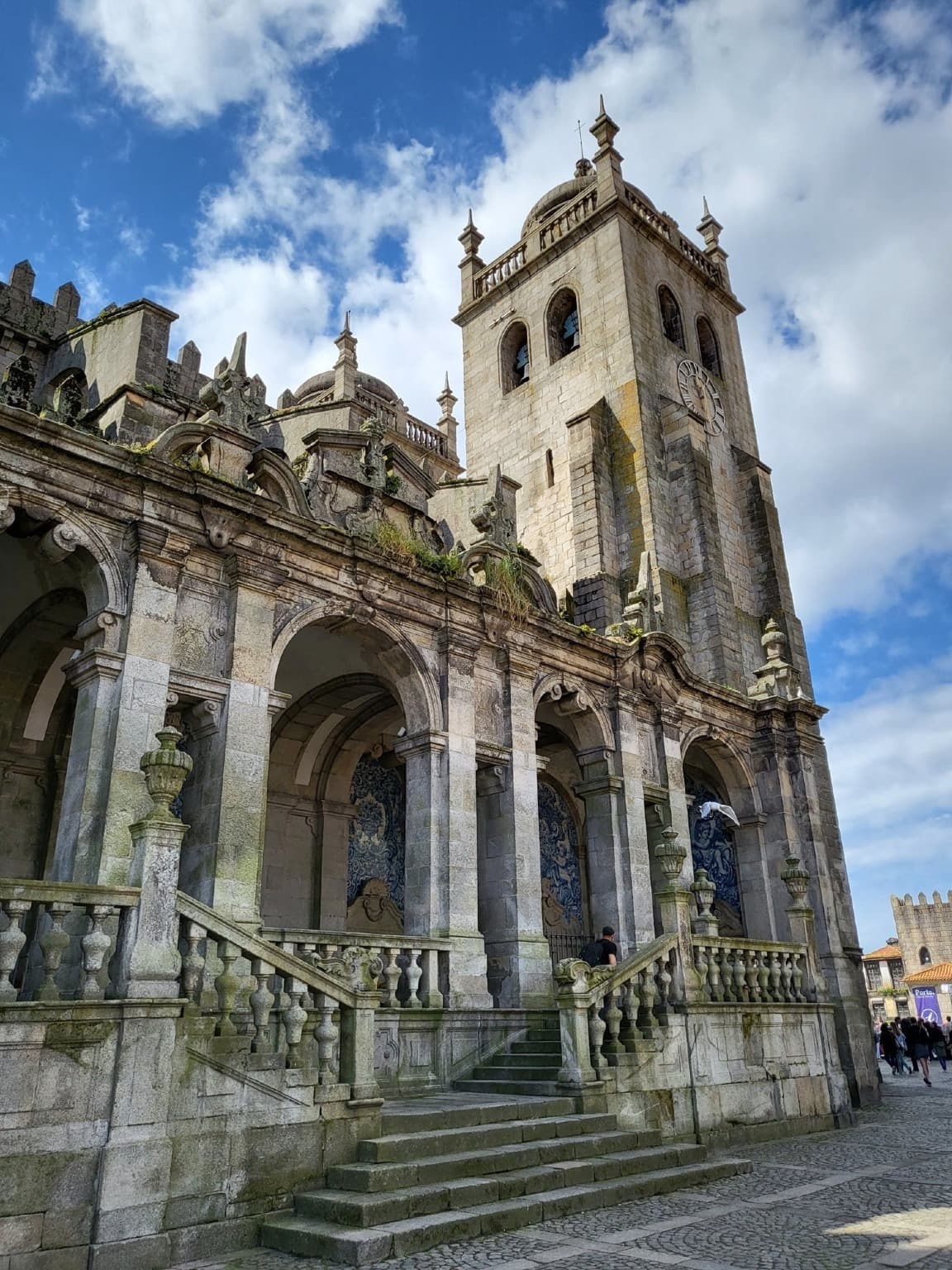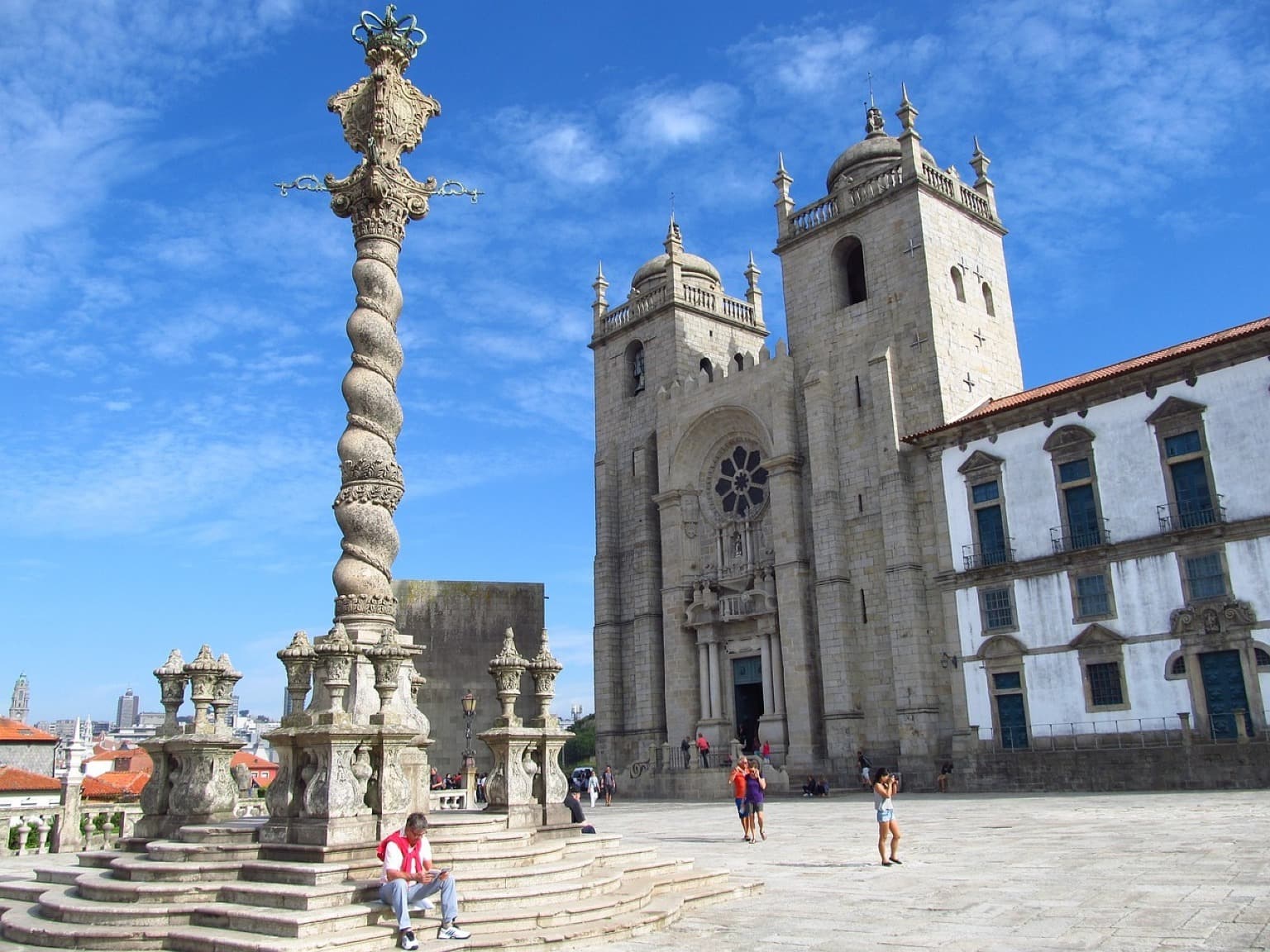Porto Cathedral – Sé do Porto
November 8, 2023
Situated in the historical center of Porto and designated as a World Heritage Site by UNESCO, Sé do Porto, or Porto Cathedral, serves as an excellent starting point to explore the city and delve into the history of the nation’s foundation. In 1120, D. Teresa donated the medieval village of Porto and provided funds to the Porto Diocese. Bishop D. Hugo seized the opportunity to begin the construction of Sé do Porto, a cathedral, and the protective walls around it in the 12th century. The completion of this magnificent religious artwork occurred in the 13th century.
D. Afonso Henriques, the first king of Portugal and D. Teresa’s son, recognized the need to support the Church to attain the throne, as the Holy See was the sole authority capable of granting the creation of new kingdoms. Consequently, D. Afonso financed the construction of cathedrals and churches, with Sé do Porto standing out as the most notable example. The cathedral is located on a high point, making it visible from all parts of the city.
The initial Sé was constructed in the Romanesque style, which is still evident in the thick walls, small openings, and geometric shapes. Designed as a fortress church with two bell towers, Sé do Porto boasts an astonishing rose window on its main façade. Over the centuries, it underwent several renovations, resulting in the incorporation of various artistic styles, including Gothic, Mannerist, and Baroque. The remarkable Gothic cloisters were added in the 14th century, along with the Gothic funerary chapel of the knight João Gordo. The Episcopal Palace is located adjacent to the Cathedral.

A breathtaking side view of Porto Cathedral.
In the 18th century, Sé do Porto underwent another transformation with the emergence of Baroque architecture. The Italian architect, painter, and sculptor Nicolau Nasoni arrived in Porto in 1725 to paint frescoes in the sacristy and on the large windows around the main altar. The tiles in the Gothic cloister and the side gallery, constructed in 1736, are also his work. Nicolau Nasoni is credited with the silver altarpiece on the left side, showcasing the grandeur of the Baroque style.
Nicolau Nasoni fell in love with Porto, became a resident, and played a significant role in shaping the city’s aesthetics. Among his other works are the famous Clérigos Tower (Torre dos Clérigos), Clérigos Church (Igreja dos Clérigos), where the artist is interred, and São Miguel Fountain (Chafariz de São Miguel), located near Sé.
In the 15th century, specifically in 1492, the relics of São Pantaleão arrived in Porto, making him the city’s first patron saint for the next five centuries. Some may believe that Saint John is the patron saint, as the city hosts a grand event and traditional celebration in his honor on June 24th. However, the true patron saint since 1981 has been Nossa Senhora da Vandoma, with a statue in the Cathedral on the left side, near the silver altar. Every year, on October 11th, the saint is celebrated with liturgical solemnity.
Porto Cathedral is said to house certain treasures that are exclusively accessible to visitors.

Pillory of Porto and Porto Cathedral façade.